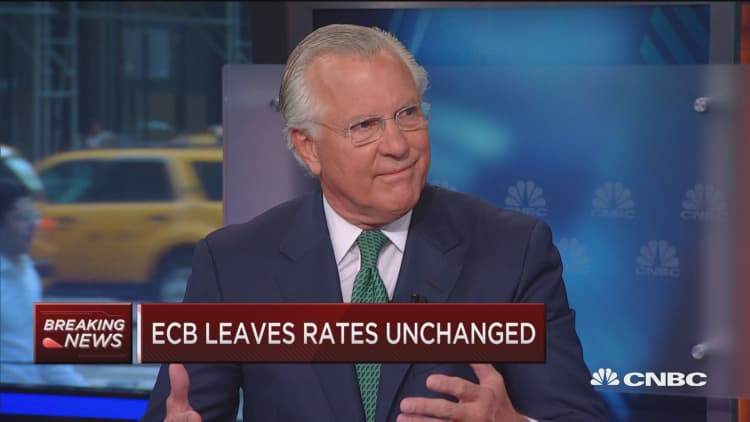
The Fed will be staying lower for longer — a lot longer, in fact, if a forecast from a major private equity player is accurate.
With the market wondering whether the U.S. central bank will hike rates at its Sept. 20-21 meeting, private equity giant KKR believes those anticipating that the Fed will resume its tightening cycle anytime soon are misreading statements from Chair Janet Yellen and others.
In fact, KKR said the Fed is on a long-term dovish cycle unlikely to change for years.
The firm specifically cites remarks that Yellen made at the Jackson Hole, Wyoming, summit in late August, when she said the "neutral" funds rate, or the level that maintains an economic equilibrium, is lower than the Fed and the market had thought and "could stay low for a prolonged time."
"Not surprisingly, given all these types of remarks as well as sluggish growth, the fed funds rate is now below 1 percent and we think it ... could trend below 1 percent until at least 2020," Henry H. McVey, KKR's head of global macro and asset allocation, said in a report for clients.
The forecast would be equivalent to at most two quarter-point rate hikes over the next four years.
KKR has $131 billion in assets and is the second-largest PE fund in the world, according to Private Equity International. Though the firm's total assets surged 14 percent through the first half of 2016, its shares have performed poorly, down 3 percent year to date and more than 22 percent over the past 12 months.
The lower-for-much-longer view meshes fairly well with traders in the fed funds futures markets, though it is in substantial conflict with Fed projections.
In June, Federal Open Market Committee members estimated that the policy rate would be at 2.4 percent in 2018, with 3 percent the longer-run level. The projections spanned a wide range, with one member estimating the rate could be just 0.6 percent in 2018, though most coalesced in the 2 percent to 3.4 percent range.
Traders, conversely, see the funds rate at just 0.84 percent in August 2019, compared with the current 0.4 percent. At present, the chance of a September move is 21 percent, moving to 25.9 percent for the November meeting and 50.6 percent in December, according to CME calculations.
The Fed has been loathe over the years to surprise markets, and traders are betting that won't change.
"Against this backdrop, we think that the asset allocation implications of our thesis are quite significant for long-term investors," McVey wrote. "Specifically, we think that the opportunity for a traditional 60/40 equity/bond strategy to achieve a 7 or 8 percent return for its constituents is now quite limited."
The investment ramifications are significant under that scenario.
Pensions funds will continue to struggle to achieve their traditional expected returns, and investors will need to begin focusing away from domestic stocks for returns, McVey said.
The firm is advocating a five-pronged approach: yield and growth; avoiding investments tied to Chinese growth and focusing instead on its exports; focusing on large U.S. domestically focused companies; providing liquidity to nonbank lending operations; and "increasing exposure to complex stories, including earnings misses, restructurings, and/or corporate repositionings."
"The good news, we believe, is that dislocations and distractions create opportunity for our approach to investing," McVey added.


